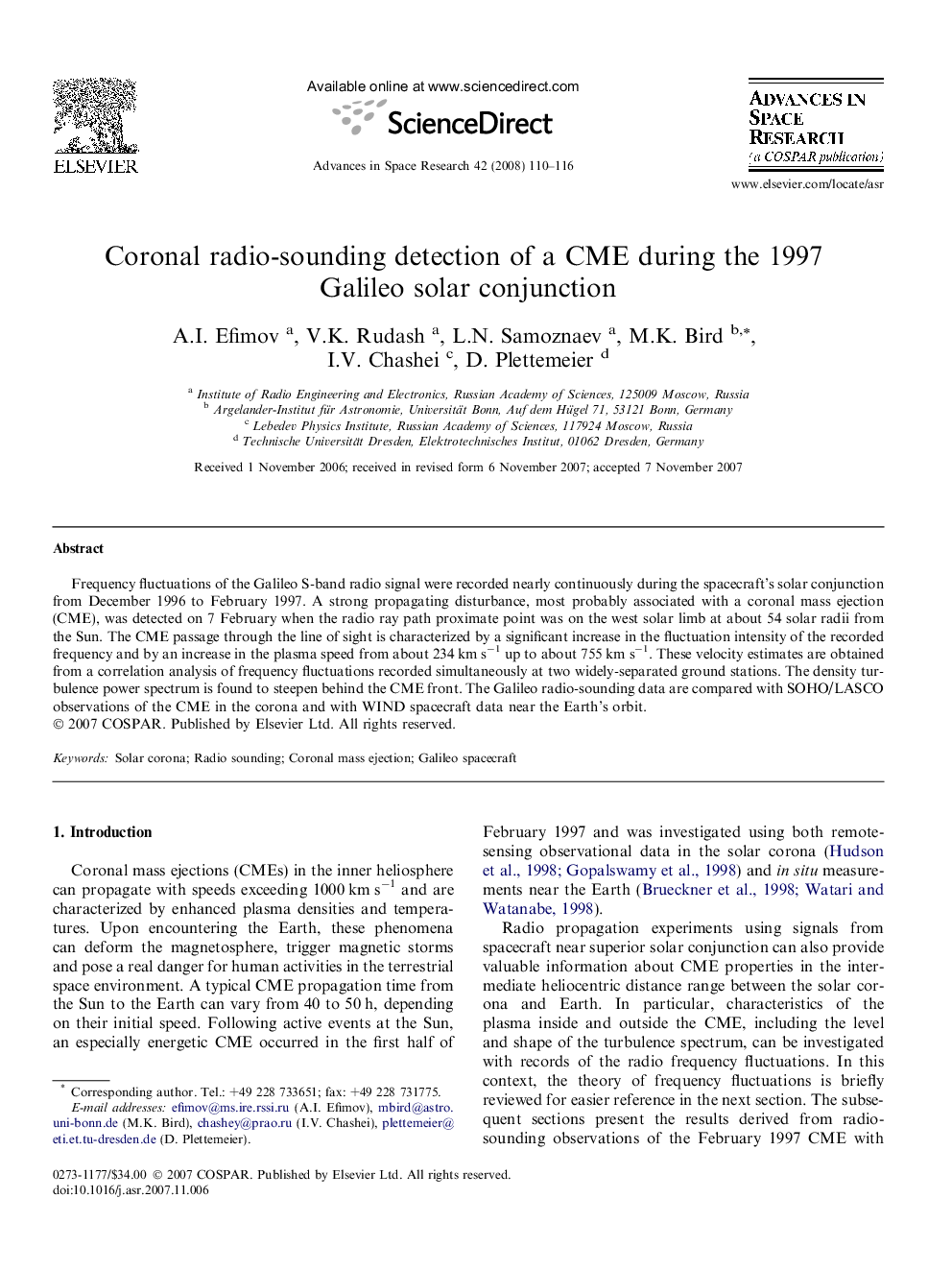| Article ID | Journal | Published Year | Pages | File Type |
|---|---|---|---|---|
| 1768030 | Advances in Space Research | 2008 | 7 Pages |
Abstract
Frequency fluctuations of the Galileo S-band radio signal were recorded nearly continuously during the spacecraft's solar conjunction from December 1996 to February 1997. A strong propagating disturbance, most probably associated with a coronal mass ejection (CME), was detected on 7 February when the radio ray path proximate point was on the west solar limb at about 54 solar radii from the Sun. The CME passage through the line of sight is characterized by a significant increase in the fluctuation intensity of the recorded frequency and by an increase in the plasma speed from about 234 km sâ1 up to about 755 km sâ1. These velocity estimates are obtained from a correlation analysis of frequency fluctuations recorded simultaneously at two widely-separated ground stations. The density turbulence power spectrum is found to steepen behind the CME front. The Galileo radio-sounding data are compared with SOHO/LASCO observations of the CME in the corona and with WIND spacecraft data near the Earth's orbit.
Related Topics
Physical Sciences and Engineering
Earth and Planetary Sciences
Space and Planetary Science
Authors
A.I. Efimov, V.K. Rudash, L.N. Samoznaev, M.K. Bird, I.V. Chashei, D. Plettemeier,
